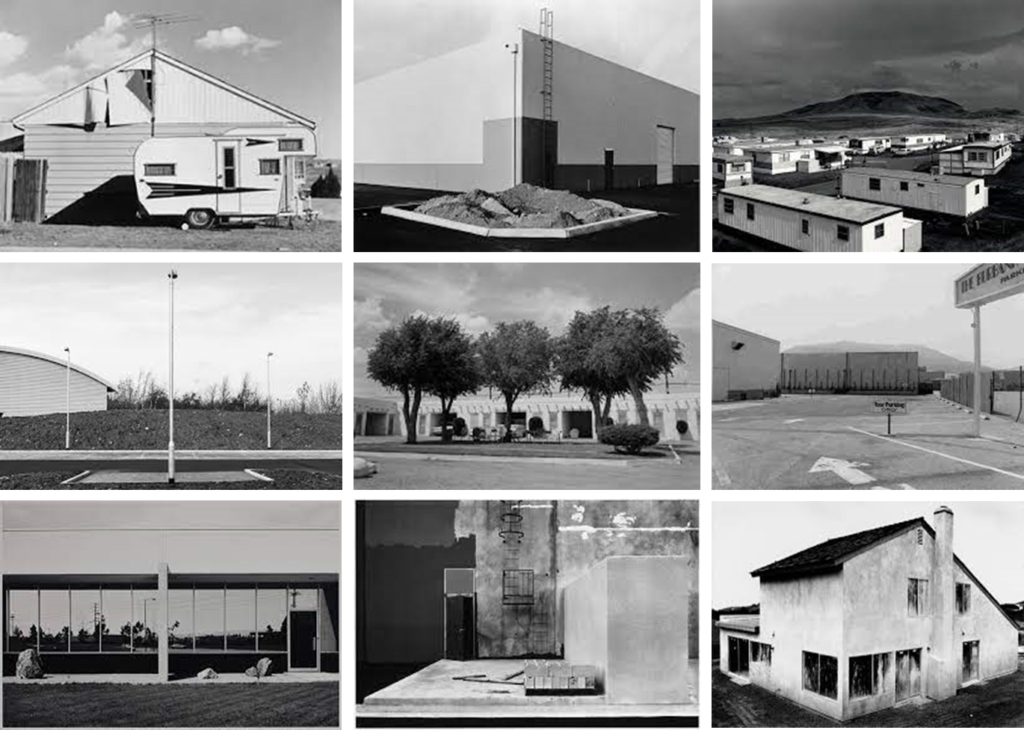The New Topographics arose in 1975 and is where photographers capture contemporary, urban or suburban landscapes. The movements was a reaction to the increasingly suburbanised world and landscapes around them as well as the tyranny of idealised in landscape photography. People involved were trying to keep the world more natural and used photography to get their message across as opposed to words etc.
mood board:

mind map:

For this photoshoot I am going to visit some different palaces as seen above to try and recreate some photos from the New Topographic era. I will ensure that my images are in focus and when they have been take I will edit them on Lightroom to make them black and white, as well as enhancing their features.
Robert Adams:
Robert Adams is an American photography, he focused his work on the ever changing western American landscape. His work first became prominent in the mid 1970’s being promoted by his book The New West, as well as his participation in the New Topographic expedition. Many people in that time and still to this day are inspired by his work and got them into taking pictures.
analysis of image:


I think that Adams’ images are very effective as they stand out with the bold black and white tones, they draw viewers into them as they catch our eyes. I think that his images are capable of holding a lot of meaning behind them as they have depth allowing us to have out own beliefs about them or creating stories in out minds of what we think is happening in the image.
Lewis Baltz:


Lewis Baltz was an American visual artist and photographer. In the late 1970’s he became important in the New Topographic movement. He was best known for his monochrome photography of suburb landscapes and industrial parks, focusing on the bleakness of beauty. Baltz’s says that there is a presence of people in all of his work, ‘they’re present in their absence’. I like his style of photography as it is very run down and shows people how anything can make a good image with lots of detail.
